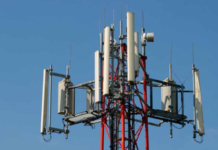Registered SIMs hit 323 million in Feb – NCC
TECHDIGEST – The number of connected SIMs in the telecommunication sector hit 323.62 million in February, with 6.98 million new SIMs being registered in the first two months of 2023.
While the number of registered new SIMs grew by 6.98 million from 316.64 million as of December 2022 to 323.62 million as of February 2023, the number of new active lines in the period only grew by 4.61 million from 222.23 million to 226.84 million in the period under review.
According to data from the Nigerian Communications Commission, the total number of inactive lines as of February 2023 was 96.79 million.
Despite the increase in the total number of registered SIMs, it still fell short of its August 2021 peak of 328.12 million.
There has been an increase in mobile connectivity in Nigeria, with the technology aiding communication and Internet adoption.
READ ALSO: NITDA Collaborates NESG on Digital Inclusion, Develops Regulatory Intelligence Framework
The increasing reliance has been fuelling the adoption of mobile connectivity, with more people becoming dependent on their mobile phones.
“There is also the emergence of the Internet of things in the nation. Smart homes need SIMS for every gadget in them, which is also contributing to the growth in the active subscriber base.”
The launch of new technologies like 5G is expected to drive the next growth wave of the mobile industry. According to the International Monetary Fund, 5G will be the main driver of mobile technology development and faster broadband speed growth in the coming years.
Mobile technology is increasingly becoming the main gateway to the Internet for many people, although its cost continues to raise concerns in emerging markets.
In a new report titled ‘Internet Adoption Trends during COVID-19’, the International Monetary Fund said, “However, relative to per capita gross income, a better metric of affordability, the average mobile-broadband basket price is nine times higher in low-income developing countries than in advanced economies, making it even more difficult for low-income developing countries to bridge the gap in internet access.”
















